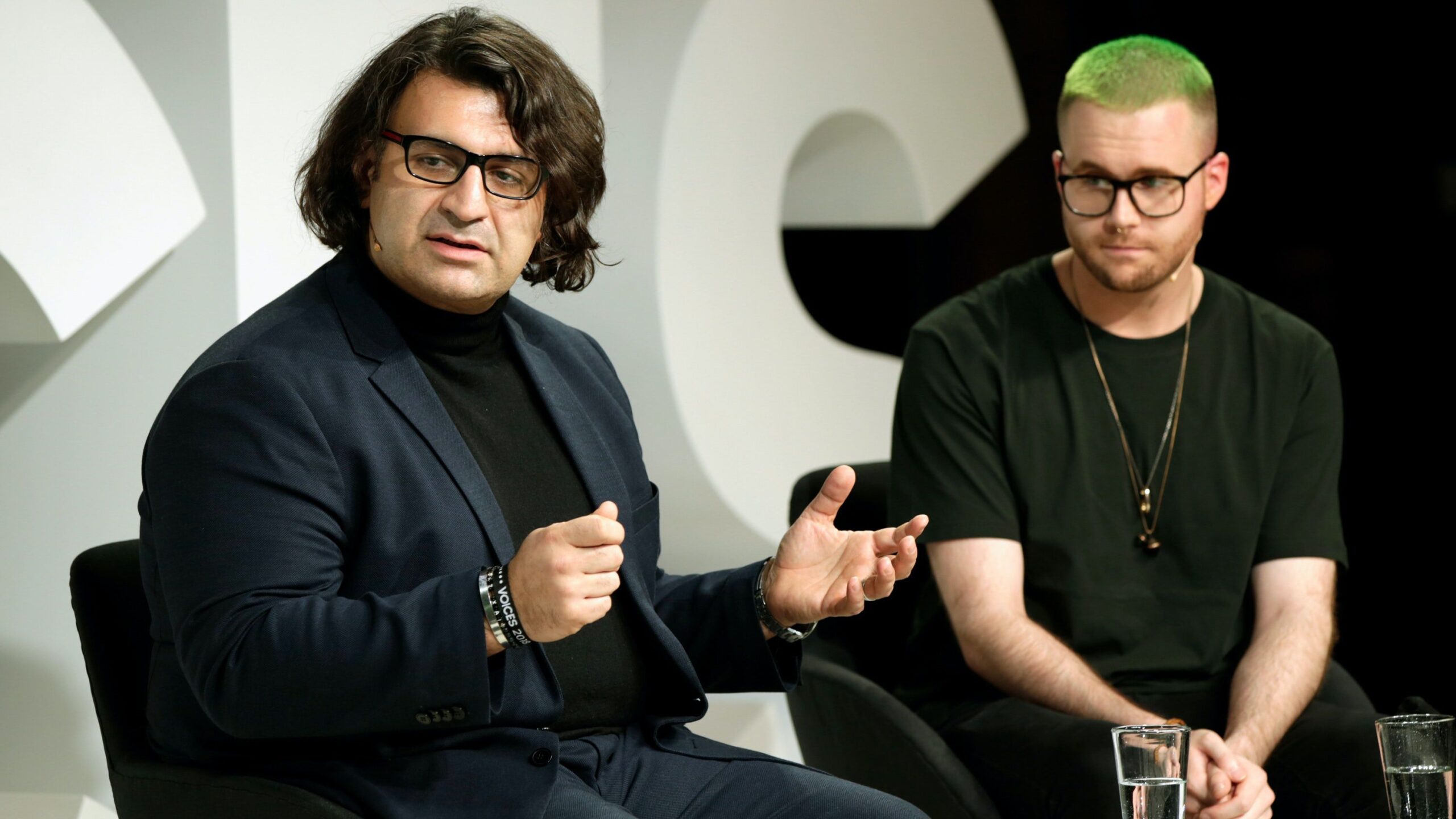
To subscribe to the BoF Podcast, please follow this link.
Subscribe to BoF Professional for unlimited access to BoF articles, plus exclusive benefits for members.
To contact The Business of Fashion with comments, questions, or speaker ideas please e-mail podcast@businessoffashion.com.
Imran Amed [00:00]: So, Christopher, I thought I would start with you. If you were a fashion industry executive, say the CEO of Burberry or the CEO of another brand out there that has, in the past — and I should mention by the way that Burberry has announced that it will no longer destroy product. But if you’re faced with this challenge of having all this unsold merchandise, using your AI machine learning data research thingy, a multifaceted, crazy, smart skillset, what would you do?
Christopher Wylie [00:42]: So, can everybody hear me? Yeah. Okay, cool. I just always check. So, every piece of unsold clothing I think is actually just a failure of matching supply and demand. It’s actually pretty much that simple. It’s just you’ve overproduced, or you haven’t distributed appropriately. So, it might’ve been that it had that unit gone to another shop or another country. You might’ve been able to sell it. And so, I think understanding that because a lot of a lot of fashion companies, they look at the supply chain and look at the mechanics of it from production to distribution, but actually understanding that the supply chain starts and ends with your consumer. So, understanding consumers will help you optimise your supply chain because you will better understand what it is that they want to buy and not wanting to buy.So, if I were Burberry or any company investing in AI will allow you to not only better match your units of clothing to your customers and therefore make more money, but you’ll be able to make more money with less units of clothing, less waste. And so it’s one of the few examples I think in any industry where there is both an argument in profit and profitability to invest in AI and also an argument and sustainability to invest in AI were being more sustainable will actually make you more money. Right? So, if I were Burberry or any company, investing in AI is something that might be wise.
IA [02:25]: Okay. Arti, you’ve been working on this at H&M for some time now. Where did you guys start at H&M? And how did it all unfold that this became an initiative, which I understand is gaining quite a lot of importance given your new star hire?
Arti Zeighami [02:44]: Absolutely. I’m happy that you told about it here at this venue. This started maybe just a little bit more than two years ago and it is exactly from that, the stuff that Chris is saying that we saw that we can, we have so much data that we can help us to optimise the whole value chain. A lot of people think about AI and think about the personalisation, the customer facing part, but there’s so much to do and to understand also how our supply chain can be better and optimise that. Everything from how you forecast trends to how you quantify how many pieces are you going to buy, how you distribute those garments to the right country, to the right store, to the right place, at the right time, and then comes the part of what the communication and the customer facing personalisation, personal promotion or whatever that might be. And also setting prices and this is what we’re spending our investment on, to capture every bits and pieces of the value chain and exactly as Chris said, utilising data on the customers. It doesn’t have to be on a personal level, it could be on an aggregated level. And you can top it off on the transactional data that we have. We have over 900 million transactions yearly. We have billions of people visiting our websites. We have millions of people in our club data — that gives a lot of data. As a colleague of mine told me, he said that it’s our customers talking to us. Right? So if we put that data on top of we have, then we can be more precise and, you know, what we say is, stop guessing what you can calculate, right? That helps you be more precise and sharper decision making. So, making sure that you do not overproduce, making sure you’re sending the right garments to the right place. We can actually both be sharper in the decision, making sure that we make right, from a business perspective, but also more sustainable. How we impact the environment is not the only about the garment itself, but also transporting, storage is so much CO2 impact that we can actually remove, and we see that in some of the tests that we can actually affect a lot and then think about doing it in every market. And think: the whole industry doing that, what impact that could entail.
IA [04:53]: Amazing. So, just so we can understand it better, can you give us a specific example of where along that huge H&M value chain/supply chain? Give us a real-life example of how you have put this into practice?
AZ [05:10]: What we are doing, as I said, we’ve been doing things for two years now and we’re testing things we’re piloting. We’re actually rolling things out globally in different markets and we’re a big company, we’re almost 70 markets and there’s a basic global part, but then you have the local part and they get the personalised part. So, you need to do things in different stacks and at the same time because there’s also the world of the disrupting, right? Everything’s going so fast so you need to make sure you’re on top of things. So we’re testing and different things in different areas. We’re running whole maybe scaling whole concepts by optimising how we allocate those concepts. A very good example of that, is the store that you visited when you were in Stockholm. It’s a store in a shopping mall. This store is a typical shopping mall of a maybe size A, B and C that we used to have before, because as human you make template to make things much easier to see. And that that typical store or shopping mall, we would have put a specific kind of store. You know, like a standard neighbourhood store — And it was doing good but not as good as it could done. Adding the data, looking at the actual customers who are buying them, what are they buying, what are the concepts — you start defining the old way of thinking at that store should have this because it’s stuff that size. No, that store needs to have this stuff, these concepts. When you allocate those garments in that specific store, I’m not moving anywhere.
IA [06:30]: So, it’s not just about the size of the store, it’s the neighbourhood the store is in, the people that tend to frequent that store, how the customers move through the store, their purchasing habits.
CW [06:42]: The cool thing about this store is that when I went in it, it actually looks quite different than a lot of H&M stores because there’s half of the product there. It’s, it’s, it’s actually looking at like, can you sell more stuff with less.
IA [06:58]: Which is counter-intuitive because sometimes you walk into an H&M store and it’s just like avalanche of stuff.
CW [07:06]: Yeah and it’s quite interesting because you walk in and there’s all kinds of little devices that give feedback both to you as the customer but also then to the shop, looking at where people go, where should the clothing be. Like even asking people in the changing rooms, are you currently satisfied right now and why?And the thing that’s quite cool about that is that there’s fundamental aspects of these technologies that you can apply, not just at H&M, but you can apply, you know, there’s eight or nine brands now within the H&M group. And so you can apply, it doesn’t matter if you are COS or if you are Arket or whatever. These are things that you can apply across the group to make the experience better for people. And those can connect.
IA [07:59]: It makes me think though, our dear, Alber was talking to us about the importance of intuition, instinct, the right brain side of our industry. So, how do you guys see the power of the left-brain data analytics, all of that predictive stuff with the creativity and intuition and that knowing that the right thing is being ahead.
AZ [08:30]: Actually, internally at H&M that we would never talk about “artificial intelligence,” we referred to it as amplified intelligence because what we’re doing is we’re providing tools and data to make sharper decision making. The decision making still is on the human. We know the business, we’ve done fashion for plus 70 years, but the world is changing. It’s more complex, so we need to provide data. I mean we’ve seen the project where we’re helping a designers with trend forecasting: it’s not because the designer could not forecast a trend it because the designer now has the tool to be able to talk to the controller and say, “Listen, my gut feeling says this part is going down now the data says the same thing, so now I can make sure that I’m amplifying my competence, I’m making sure I can talk to the business guy and I say, “You should not buy that product because I can see that my gut feeling is empowered by the data. Before you always look at BI as tools, you know, descriptive, what has happened. This is predictive, helping you to decide better forward: if that is statistic, this is probability. So, by helping probability you can be sharper.
CW [09:38]: I love fashion because it’s so creative and interesting and fun. Because I interact with a lot of designers and often they kind of go like, “Oh, data, I’m not a math person” or you know, “Every time I talked to somebody who’s done research, they always tell me I can’t do something like, ‘oh that won’t sell.'” And one of the things I say is actually good use of data will help amplify your creativity because if you have an idea, if you like this, there’s surely other people like you that will like this thing. And previously, a lot of things would be turned down because there wouldn’t necessarily be enough understanding or route to market, to take this weird and wonderful thing and find where that market is. Because it might be that that market is actually distributed in a narrow segment. That’s your pan geographic and, but now we can say, okay, there’s this cool niche thing actually will be able to potentially find a market for it. There’s this niche place right here that might buy that thing or there might be a little bit of customers all over the place. So we might be able to, we might not put it in a shop, we might have it online, but there might be a market for that. And so the cool thing about better understanding of the market is that actually I really genuinely think that AI is one of the solutions to de-homogenising the market and actually enhancing the diversity of the market in terms of design and enhancing people’s creativity.
IA: Because you can have more variety —
CW [11:13]: You can have more variety and sell that variety because you’ll be able to understand where should that variety go. And how to reach out to the people who might like that variety.
AZ [11:27]: If you look at our company, it’s so interesting. I’m so passionate about this.
IA: That’s why you’re here!
AZ: In our projects that we’re running across every part of the organisation. The ones that are leading the project is the business side, is the designer, is the buyers, is the sales guy, is the merchandiser — they’re driving the project. I’m enabling them with the data analytics and my beautiful brains that I have in my teams, they’re creating all these crazy, cool algos, but they’re the one running the business, running the projects, so there’s a huge pull from the organisation because they feel that we’re amplifying them. I’m not taking over. So it is, you know, data. It’s art and science. It’s human and machine. It’s gut feeling and data together.
IA [12:10]: Do you know what I love about this? I love that. This is like a positive technology story from today. We’ve had —
CW: Tech is cool, data is cool! Amazing things that you can do with data. It doesn’t have to be evil.
IA: Right? So both of you 30 seconds each. Fast forward five years, what do you think your, you’ve, you’ve been here today, you’ve heard about the challenges with climate change and greenhouse gases and overproduction and waste and plastic and all the problems we have in the world with regards to our environment. What do you think is the real potential impact of this technology, Chris?
CW [12:52]: So, all of the of fashion, it’s not just sustainability as we heard earlier, like labour rights violations and monitoring of factories. Creating a smart supply chain from beginning to end will enable the fashion sector to reduce the amount that they produce and reduce the waste that they produce, maintain profitability, but also distress and give breathing space that supply chain and that allows you not only to reduce your carbon emissions but also, in monitoring factories and being able to create less demand on those factories, you could also improve labour standards. And maintain profitability. This is the amazing thing. You can have your cake and you can eat it.
IA [13:41]: Right? And like Alber said, Alber was talking about the like eight collections, 16 collections. It feels like sometimes the way that we’ve been trying to solve the problems in the industry just by producing more stuff and hoping someone’s going to buy it.
CW: I think producing less will get you more.
AZ: For us, system ability is a core thing is part of our goals. Part of my mindset, everything we do, even in the part of the, when we talk about the AI, I’m very close with our head of sustainability. And very much in everything bits and pieces we talk about, every beat, everything we do has a systemic perspective to it. There’s also part of system ability abilities not only about the environment is also about the human and ethics, so we’re actually also taking the leadership to put ethics in AI in the forefront. We’re not. We haven’t solved that problem yet, but it’s an area we need to make sure that we understand because there’s a lot of bias in the data. There’s a lot of thing you could do in a wrong way with the data and we realised that. I think we’re one of the few companies that have a head of AI policy and she is working with us on a daily basis to make sure, can we do right things? Are we utilising data in the right way? Are we truthful with our customer? Are we transparent with our customer? That’s important. GDPR is just like hygiene factor. We need to notch that up much higher. And then you actually have a different spin on it when it comes to the fashion industry.
IA [14:56]: Okay. Well, I really look forward to seeing how this all evolves. Congratulations on your new role. And, Arti, thank you for coming down from Sweden for this. Please help me in thanking Christopher and Arti.



